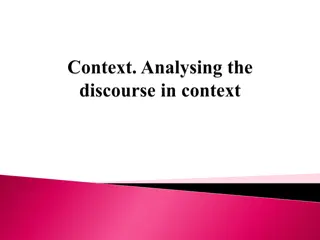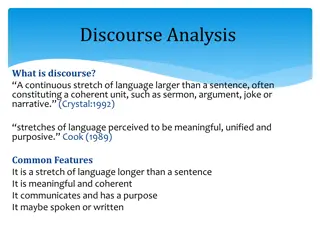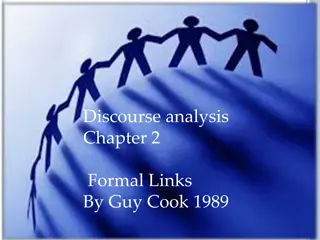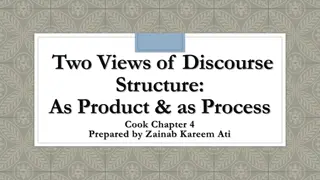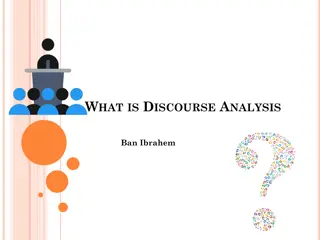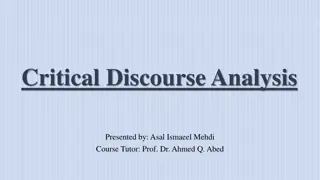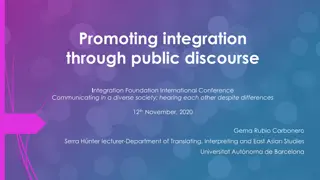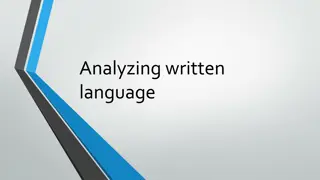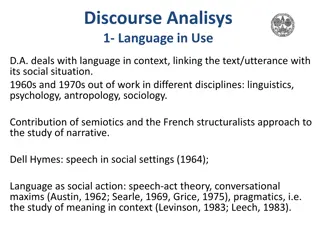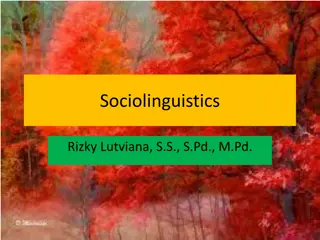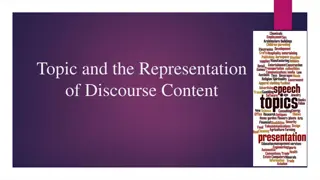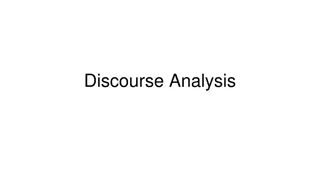Role of Language in Social Discourse
Dive into the intricate role language plays in constructing reality, shaping debates, and influencing social behavior. Explore the cognitive and discursive aspects of language and its implications in social interactions, identity formation, and persuasive communication.
Download Presentation

Please find below an Image/Link to download the presentation.
The content on the website is provided AS IS for your information and personal use only. It may not be sold, licensed, or shared on other websites without obtaining consent from the author.If you encounter any issues during the download, it is possible that the publisher has removed the file from their server.
You are allowed to download the files provided on this website for personal or commercial use, subject to the condition that they are used lawfully. All files are the property of their respective owners.
The content on the website is provided AS IS for your information and personal use only. It may not be sold, licensed, or shared on other websites without obtaining consent from the author.
E N D
Presentation Transcript
What role for language? Dr Tim Kurz Psychology, University of Bath t.kurz@bath.ac.uk
What do I do? A social psychologist by training Have always been methodologically and epistemologically multi-lingual Realist experimentalism through to social constructionist discourse/conversation analysis Binding interest? a fascination with the role of language/discourse in the social world
Thinking about Language Discursively As a rhetorical tool we use to construct a version of reality that suits our situated purpose E.g., Constructions of recreational pole dancing ( fun , just like any other dancing ) As a resource that furnishes our debates with culturally taken-for-granted understandings E.g., Political rhetoric around climate change ( national interest , lifestyle maintenance ) As a medium through which we achieve the various and varied business of social interaction E.g., The production of a moral mother identity amongst those who formula feed their infants in the face of Breast is Best campaigns that tell them to not feel guilty
Thinking about Language Cognitively/Experimentally As something we can count (as a DV) E.g., Coding reproduction of stereotype consistent/inconsistent content in stories about members of own/other groups to different audiences Coding for different ways of framing climate change in media coverage of IPCC reports As something that can quantitatively influence (as an IV) people s thinking and behaviour E.g., Effects of constructing fines as retribution vs compensation on levels of co-operative compliance
How to Understand Humility/Arrogance in Debate? As I understand the project Phase I: Work out what humility/arrogance looks like (how do we spot it when it is there?) Phase 2: Use this spotting tool to measure the quantity of its occurrence under different conditions (e.g. self affirmation etc)
Some Spotting Challenges Are arrogance/humility: A) Ways of being that we have? (like an attitude or a personality trait or psychological state) Someone is (being) arrogant/humble we might look for interactional markers of this bubbling over ? B) Actions that we perform in social interaction? (like an accusation, a blaming, an agreement or an assessment) Someone has done arrogance/humility .we might analyse how this was achieved and to what end? Note: People probably do humility all the time (and not necessarily a good thing) C) Concepts that we invoke directly in social interaction to achieve interactional business (like an identity category [ speaking as a mother ] or an emotional state [ what you said hurt my feelings ]) Someone has put arrogance/humility to work in interaction we might analyse what work the concepts perform?
Playing with an example https://www.youtube.com/watch?v=noOPNkxQE9M (4:50-5:12)
Making claims to others psychological states
Constructing ones own position as self-evident


